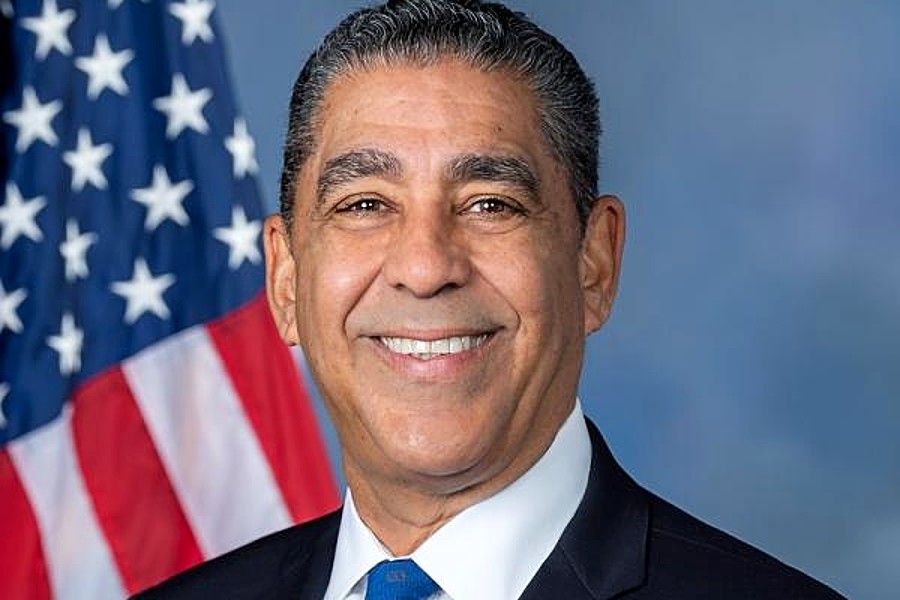 Manhattan Borough President Gale A. Brewer issued her formal recommendation on the Inwood rezoning proposal working its way through the city’s Uniform Land Use Review Procedure (ULURP), rejecting the plan in its current form and outlining the protections for local businesses and area tenants that would be needed for the plan to win her support.
Manhattan Borough President Gale A. Brewer issued her formal recommendation on the Inwood rezoning proposal working its way through the city’s Uniform Land Use Review Procedure (ULURP), rejecting the plan in its current form and outlining the protections for local businesses and area tenants that would be needed for the plan to win her support.
“Inwood is a vibrant, multicultural neighborhood with a huge amount of rent-stabilized housing and locally owned and operated businesses that provide an economic anchor for the community. Displacement is a threat that’s already facing Inwood, with or without a rezoning. One test a rezoning plan must withstand is how much it does to counteract displacement,” said Manhattan Borough President Gale A. Brewer. “A rezoning could add sorely-needed new housing with guaranteed, permanently affordable units, but it cannot work unless it includes stronger protections and support for existing local businesses and tenants.”
The de Blasio administration’s Inwood rezoning plan proposes several major changes affecting different parts of the neighborhood:
- The Sherman Creek section, mostly east of Tenth Avenue between West 202nd Street and West 207th Street, would be rezoned to allow manufacturing spaces to be converted for medium- and high-density residential use.
- The area known as the “Commercial U,” which forms Inwood’s “Main Street” of mostly one- and two-story commercial buildings, would be classified as a subdistrict allowing development of medium-density residential, commercial, and mixed-use buildings, and the Mandatory Inclusionary Housing (MIH) program’s requirements would apply to new residential and mixed-use developments there.
- The “Upland Wedge” subdistrict would be rezoned, allowing high-density residential development (with MIH requirements) where heavy commercial uses like auto repair shops now exist;
- The “Tip of Manhattan” subdistrict (formed by West 218th Street east of Tenth Avenue and the area east of Ninth Avenue from West 218th Street to West 220th Street) would be rezoned to permit the conversion of manufacturing uses to high-density residential uses.
- Contextual requirements (including a height cap) would be added to the “Upland Core” to preserve the current neighborhood context of mid-rise buildings.
Brewer wrote in her recommendation that she could not support the plan as it stands today, and outlined a series of changes and additions she believes are necessary for the plan to deliver sufficient affordable housing and benefits for the community while minimizing harm and displacement. These include:
- Creating more new affordable housing, with a higher percentage of units at rents that are accessible for the average current Inwood resident.
Brewer pointed to two city-owned sites in the rezoning area that could easily generate more than 1,000 units of affordable housing in 100-percent affordable developments.
– Brewer also pointed to an apparently underutilized site owned by the federal Department of Justice that could produce another 100-percent affordable development if acquired by the city.
– Brewer called on the city to commit to using the deepest affordability option of the Mandatory Inclusionary Housing program to provide housing targeted to 30 percent of Area Median Income, which would make more of the affordable units generated accessible to average Inwood tenants.
– Brewer called on the city to pursue a plan that produces a significantly higher percentage of new affordable units than the current plan, with a goal of more than 50 percent of new units being affordable. - The addition of policies and programs that will help current tenants remain in their homes.
– Brewer called for $7.5 million in new annual funding beyond the existing Right-to-Counsel program for tenants, starting in the city’s coming FY 2018-2019 budget, to ensure all rent-stabilized tenants in Inwood have access to counsel for harassment, eviction, or any issue stemming from “preferential rent” arrangements.
– Brewer also stated that this funding must support proactive tenant organizing and litigation to find stabilized apartments whose legal rents have been unlawfully or fraudulently increased and restore them to their proper legal rents.
– Brewer also called for the city to allocate additional expense and capital funds for NYCHA’s Dyckman Houses development, whose residents will be impacted by the rezoning. - Measures to help local small businesses and community institutions remain in the neighborhood.
– Brewer called for much of the “Commercial U” corridor (with the exception of the Inwood Library redevelopment site) to be removed from the rezoning area or subjected to a sunrise provision that would delay the phase-in until sufficient new commercial space has been developed in the rest of the rezoning area. Without the removal or delay of the new zoning for the “Commercial U,” Brewer wrote in her formal recommendation, the rezoning creates too high a risk that existing businesses will be immediately disrupted and displaced from the neighborhood entirely by new development.
– Brewer called for limits on storefront frontages in all newly-developed retail space in Inwood similar to those she put in place on the Upper West Side, so that new local businesses can emerge and businesses that are displaced can relocate with assistance when necessary.
– Brewer also called on the city to create temporary space to relocate some “Commercial U” businesses so they can remain open in the neighborhood and return to the corridor after development occurs.
Brewer supported the Inwood Library redevelopment project, but called on the city and the New York Public Library to find a true, fully-featured, brick-and-mortar transitional space so the Inwood Library can remain open and provide full services to the community while its permanent home is being redeveloped. - The creation of opportunities for new local businesses, new jobs, and new cultural resources to maintain Inwood’s diversity and character as a distinctive neighborhood.
– Brewer called on the city to create an incubator space for new businesses in the neighborhood, and opportunities for additional cultural spaces at city-owned lots, including a specific lot in the Tip of Manhattan subdistrict.
Summing up her recommendation, Brewer wrote:
“Revamping the proposal along these lines would approximately double the amount of projected permanent affordable housing in the plan, significantly address the attrition of rent-stabilized apartments and displacement of current residents, and provide significant opportunity for local businesses to remain in the neighborhood. Without such changes, the plan provides inadequate benefits to the current residents and businesses of Inwood. These changes would move the plan significantly toward the goals expressed by the hundreds, if not thousands, of residents and business owners my office has heard from over the last two years.”
Recommendation available for download here: bit.ly/MBPinwood
The Inwood rezoning proposal began its public review process on January 16, 2018. The rezoning application will be considered next by the City Planning Commission, which must act within 60 days. From there, the plan will proceed to the City Council, which will have 50 days to review and act on the proposal.
Become a Harlem Insider!
By submitting this form, you are consenting to receive marketing emails from: Harlem World Magazine, 2521 1/2 west 42nd street, Los Angeles, CA, 90008, https://www.harlemworldmagazine.com. You can revoke your consent to receive emails at any time by using the SafeUnsubscribe® link, found at the bottom of every email. Emails are serviced by Constant Contact








